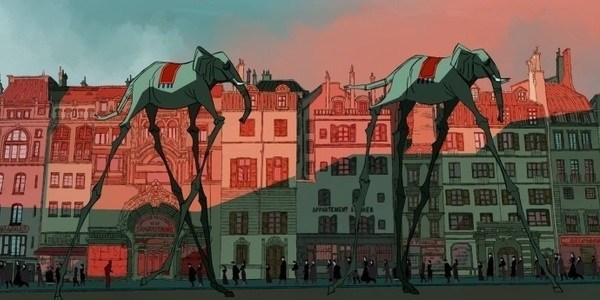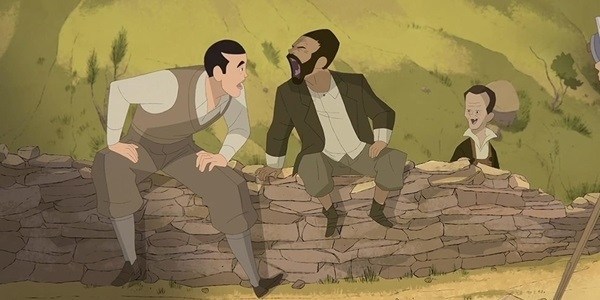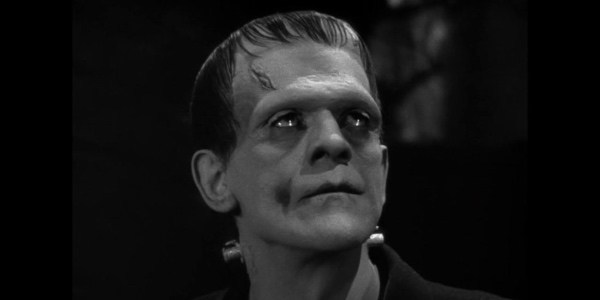EUFF 2020: Buñuel in the Labyrinth of the Turtles: Surprisingly Simplistic Portrayal of an Intricate Mind
Surrealism and realism, regardless of the complementary nature of the words, are two broadly contrasting concepts in art. While realism urges for art’s compliance and accuracy with the real world, surrealism, on the other hand, ignores the precision, dwells into the subconscious, and emphasizes the depths of human imagination arising from reality. In a similar vein, the objective of documentaries is to depict the world and its realness. Imagine the resultant emerging from the confluence of these two concepts – documentary filmmaking and surrealism – that do not go hand-in-glove, and one of the earliest upshot of this marriage in the history of film is Las Hurdes: Tierra Sin Pan (Land without Bread) made in 1933 by Luis Buñuel.
Distinguishing the Purpose of Art
Luis Buñuel, one of the most influential names in the surrealist movement, has directed some of the most famous avant-garde films, with his debut Un Chien Andalou (An Andalusian Dog) being hailed as the most famous short film ever by film critic Roger Ebert. Buñuel in the Labyrinth of the Turtles by Salvador Simó is part biography, part making-of doc, and part social critique on the pre-WWII era, that offers a peek into the mind of one of the most intricate artists whose contribution to cinema continues to guide new-age filmmakers.

The film opens with a group of people seated in a bar arguing the purpose of art. While a few assert over arts role in changing the world, others see it as a medium that allows the filmmaker to introspect, something Russian filmmaker Andrei Tarkovsky’s works are pre-eminent for. While the debate seems far from concluding, the group turns to Buñuel, who is sitting in a corner dressed in nun’s grab, presumably the one from Un Chien Andalou. Although the scene cuts before he answers, we understand Buñuel’s modus operandi through the film, and learning it in a straight-forward fashion would have been certainly less rewarding than gradually discerning his craft with every move he makes.
Finds Feet in Film History
Disappointed with the extreme reactions to his feature debut L’age d’Or (Age of Gold) – to an extent of a 49-year ban on public exhibition – Buñuel almost immediately set to make a documentary on the plight of Las Hurdes, among the most backward regions. Ascribed to the negative reception to his previous film, Buñuel initially struggles to seek funding, until his friend Ramón Acín casually says he’d produce the film if he ever wins a lottery, and ends up keeping his promise when he strikes one. As the group – including the filmmaker, Acín, a cinematographer, and Pierre Unik, a writer – arrives at the village, they feel the compulsion to enunciate and amplify the unheard voices and shunned lives.

However, the initial question – should an artist use his art to transform the world it is representing, or just impose his thoughts on it – remains at the center, shaping the film. If you’ve seen Tierra Sin Pan, you might know that the tonality and juxtaposition of the film are puzzling to a level that makes the Borat films look like outright serious storytelling. Harrowing, non-simulated visuals – ranging from the depiction of destitute lives of the villages to animal violence – are accompanied by joyous music, leaving the viewers perplexed. This film depicts the circumstances it was made in, filling in the voids of film history by burrowing into the depths of a rarely discussed part of cinema. Perhaps, it is best enjoyed as a double-bill, following Tierra Sin Pan.
As a standalone film, although it alienates the audience-demographic that is unfamiliar with the life and works of the leading man, the different layers of the film ensure that the film works on any of the levels. For instance, one may be completely detached from the surrealism movement of the 1920s but they’d still find the unconventional filmmaking style interesting. On a level, it’s a buddy comedy as well, following the misadventures of Buñuel and his crew as they get their film made using one unorthodox technique after the other.
Excessively Simple
Contrary to Buñuel’s works, the film is rather straight, accessible, and is neither realistic nor surrealistic. It works both in favor and against the film. Buñuel’s art thrived in obscurity and abstruseness, and I was certainly expecting it to be labyrinthine; even the title had cues. I mean, he was adamant about his work being imperceptible, famously quoting “No idea or image that might lend itself to a rational explanation of any kind would be accepted,” while filming Un Chien Andalou. Buñuel in the Labyrinth of the Turtles is simple, smart, and sugary, which are, by all means, good qualities to be associated with a film, but here, though, I wish it was as irrational as the artist it is representing.

Being an animated film, visual replication of the master’s surrealistic nature is easily achievable, but the films use it too little. In a similar vein, the screenplay by Eligio R. Montero & Salvador Simó switches from filmmaking pursuit to biographical mode, with the latter feeling like it is present feign emotional resonance. A complicated personality like Buñuel comes across as a troubled man-child with daddy-issues and identity crisis. Clocking in under 80 minutes, I felt it was way more abbreviated than what it needs to leave the emotional impact that it tries to create. Nevertheless, a film can do only so much, and Buñuel in the Labyrinth of the Turtles does more rights than wrongs. More importantly, ascertaining the perception of art, although it’s not spelled aloud, makes it a personal and edifying experience.
Conclusion
Buñuel in the Labyrinth of the Turtles is certainly not for everyone, but it doesn’t mean people unfamiliar with the films of Luis Buñuel will find it incomprehensible. Instead, it’ll act as an introductory chapter to surrealism in cinema. Devoid of the obscurity, Buñuel in the Labyrinth of the Turtles is a stark contrast to the film it is woven around. It is coherent, perceptible, and unusually entertaining in a largely mainstream way.
What are some of your favorite avant-garde films? Let us know in the comments below.
Buñuel in the Labyrinth of the Turtles is now available to stream on Kanopy in the U.S.
Watch Buñuel in the Labyrinth of the Turtles
Does content like this matter to you?
Become a Member and support film journalism. Unlock access to all of Film Inquiry`s great articles. Join a community of like-minded readers who are passionate about cinema – get access to our private members Network, give back to independent filmmakers, and more.
Join now!





